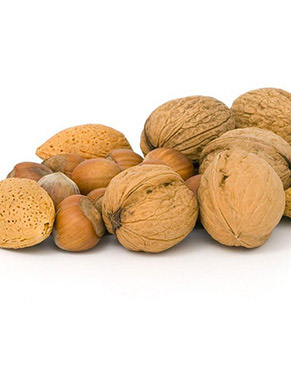How This Helps
Celiac Disease | Brain | Cancer | Heart Diseases | Anemia | High Cholesterol | Obesity | Antioxidation | Bones |
Hazelnuts (called as filbert nuts or cobnuts depending on the species) are sweet and nutritious nuts derived from the Betulaceae family of trees. These nuts are rich in monounsaturated fatty acids, which lower the occurrence of cardiovascular diseases. Additionally, hazelnuts are rich in Vitamin E and Vitamin B like niacin, riboflavin, pantothenic acid, thiamine, and pyridoxine (Vitamin B6).
Instructions
Hazelnuts Nutrition Facts:
Use It In
Caution
Science and Research
Heart:
Hazelnuts are rich in ‘heart-friendly’ fats like monounsaturated fatty acids like oleic acid and important fatty acids like linoleic acid that lower LDL or bad cholesterol levels and increase HDL or good cholesterol levels, thereby preventing coronary artery diseases or strokes.
Anemia:
Hazelnuts are very rich in folate, i.e., 113 µg for every 100g, equivalent to almost 28% of dietary consumption of this vitamin. Folate helps to prevent megaloblastic anemia and neural tube defects in newborn babies.
Hazelnuts are also rich in calcium, potassium, manganese, copper, iron and zinc. Copper and manganese are necessary for the action of the enzyme superoxide dismutase, whereas iron helps prevent microcytic anemia.
Skin:
Hazelnut oil has a nutty smell and has been used to protect skin against excessive dryness. Due to its astringent properties, this oil is used as the carrier oil in aromatherapy, massage, and cosmetic industry.







